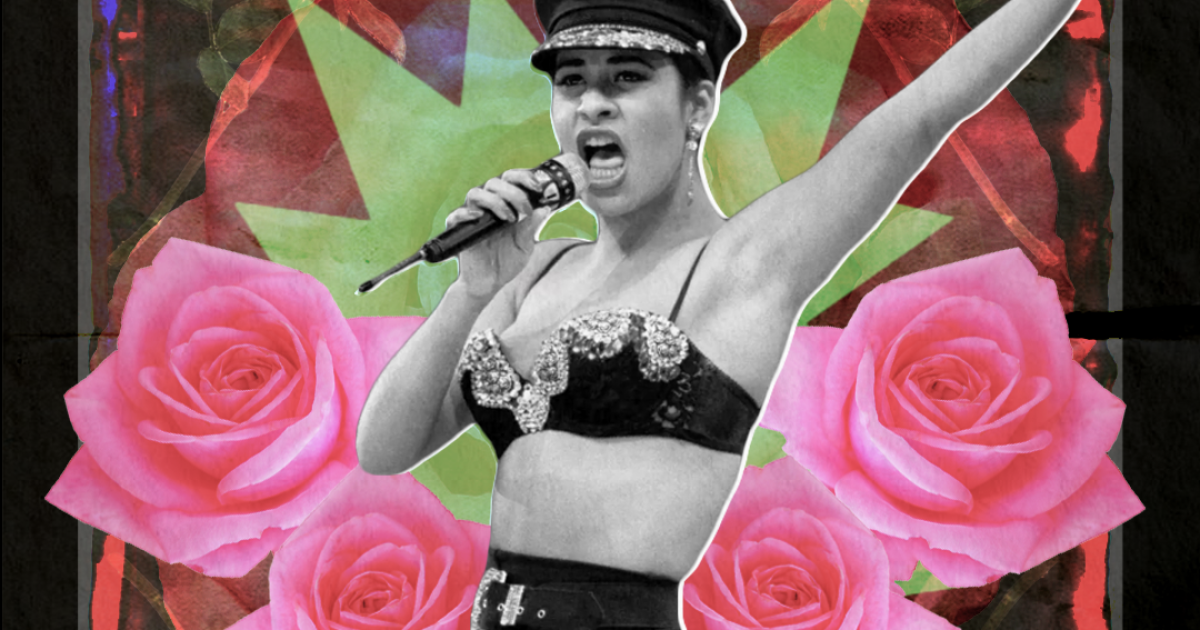Earlier this month, the Oxygen network announced “Selena & Yolanda: The Secrets Between Them,” a two-part docuseries airing Saturday that promises to shed new light on the murder of Tejano icon Selena Quintanilla directly from her killer, Yolanda Saldívar.
“After so many years, I think it’s time to set the record straight,” says Saldívar in a trailer, speaking from inside Mountain View Prison in Gatesville, Texas, where she’s been since 1995. She is up for parole in 2025, almost 30 years to the day of Selena’s murder.
The clip points to “secrets” Quintanilla held, and based on the tone, it’s heavily implied that those secrets are dark in nature. “This is not a simple case of murder,” a family member of Saldívar says. Another talking head comments, “She’s just a person you can’t believe,” leaving plenty of room for the viewer to believe it’s Selena he is referring to.
This all feels like yet another exercise in salacious, tabloid rabidness that has long plagued victimized women. The series, created without the consent of the Quintanilla family, thus far has come off as a cash grab from a network that devolved from a space for women-led stories to focusing on true crime shows that regularly swerve into the morally questionable.
“In documentary filmmaking, the director, the producer, and the writers hold the power of framing: What are they highlighting? What are they giving weight to? What are they centering?” said Maria Elena Garcia, creator and host of the podcast “Anything for Selena” and executive editor at Futuro Studios.
“Based on the promotions that have aired, it’s very clear to me that they’re giving a lot of weight to Yolanda’s allegations. Empty allegations that she has been making for literally decades. To me, that’s incredibly irresponsible, unethical and, frankly, just distasteful.”
To capitalize on Selena, exploit her in death and attempt to renegotiate her victimhood by platforming her killer and positioning the existence of “secrets” as a means of rationalizing her murder is a new low, even in the true crime-obsessed world we live in now.
“What bothers me the most is that framing implies that whatever Selena’s secret was, somehow contributed to her death,” Garcia said. “That somehow, whatever she was allegedly hiding, informed Yolanda’s decision to kill her and when you do that, you’re putting Selena on trial.”
Any allegations, added Garcia, are “a really unfortunate attempt to skew her story into some sort of true crime cliché,” which is a shame when “there’s so much richness to her legacy that people could dig into instead of going for the cheap tricks of true crime.”
What those allegations are doesn’t matter. No secret held, nothing Quintanilla may have done or said, excuses Saldívar murdering her, and positioning a docuseries in a manner that encourages that narrative is nasty business.
And business it is. Selena is big money; a brand that routinely pulls in profit and is a rare sure bet because of her devoted fanbase. The Quintanilla family has collaborated with partners for a number of successful Selena-centric projects including, but not limited to: the 1997 film “Selena” (starring Jennifer Lopez); 2020’s “Selena: The Series,” which streams on Netflix; collections with Funko Pop!, Forever 21, MAC, and others; and a 2015 crowdfunding attempt to create a Selena hologram for concert use, which drew some criticism.
Quintanilla is a venerated figure whose violent killing has fueled her exploitation. She was taken at her prime, which leaves space for others to continue to exalt her cultural impact and memorialize her through art and merchandise, usually with reverence and loving intentions. But sometimes not.
Ultimately it’s the decision of her family to allow Selena products to be created, and the consumer’s choice to buy them. What keeps consumers engaging in all things Selena is when it’s apparent that what’s being offered comes from a place of love and celebration. And so much of it is. From podcasts, to T-shirts, to piñatas.
This docuseries, however, is rooted in something much darker. The Quintanillas, for better or worse, have been litigiously protective of her image, and this docuseries perhaps explains why to some extent.
“I understand why this show is being made, but it’s not a great reason,” said Jorge Rivera, a television writer and co-chair of the Writers Guild of America Latinx Writers Committee, who has worked on a number of true crime docs over the years. “No one’s going get answers from this that they think they’re gonna get. No one’s going get closure from this that they think that they’re gonna get … I don’t think anyone’s going to benefit except for the people making the series. So what is the point of this except for a money grab?”
That it exists is not a shock, as the Selena Industrial Complex will always churn so long as there’s money to be made, which points to Hollywood’s lack of imagination and investment when it comes to Latinx stories.
“The industry seems to really gravitate towards our trauma,” Rivera said. “It’s really, really frustrating because we are way much more than that. We are fully realized human beings with a tremendous scope of experiences and stories to tell.”
After last year’s SAG and WGA strike ended in November, many writers are still out of work, shows are being canceled (Hulu’s “This Fool” being the latest on the chopping block) and Hollywood is struggling to get it together, leaving creatives all around frustrated and in financial straits.
“It’s really a struggle to get our shows greenlit and even when they get greenlit they don’t get the proper marketing support and they often get canceled first before really finding an audience,” Rivera added. “But these are the kinds of things that we’re seeing greenlit in this market. It’s a huge bummer.”
